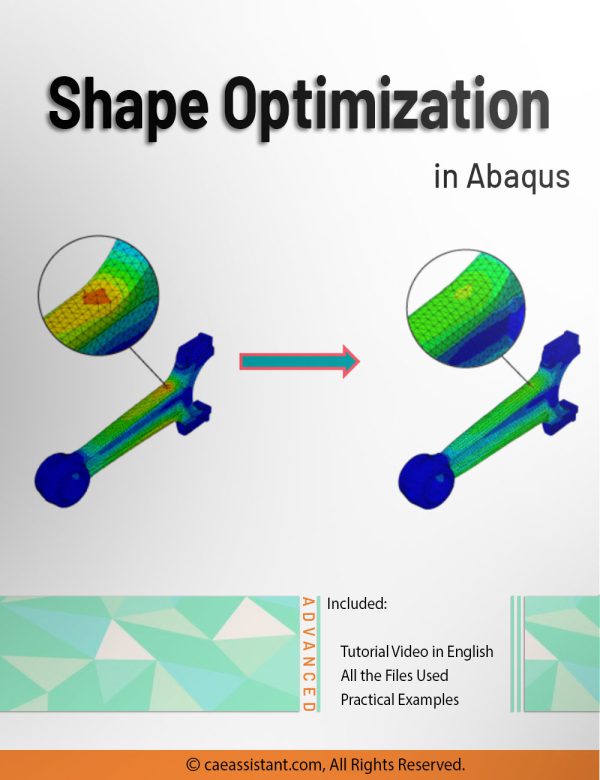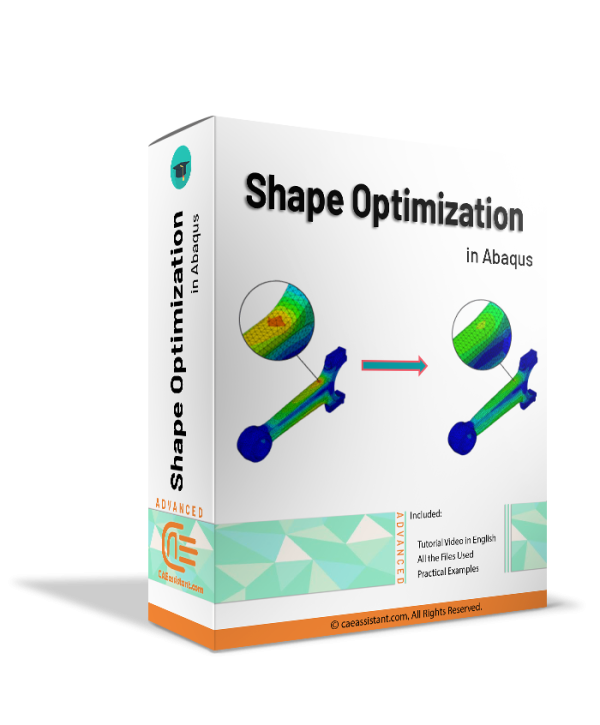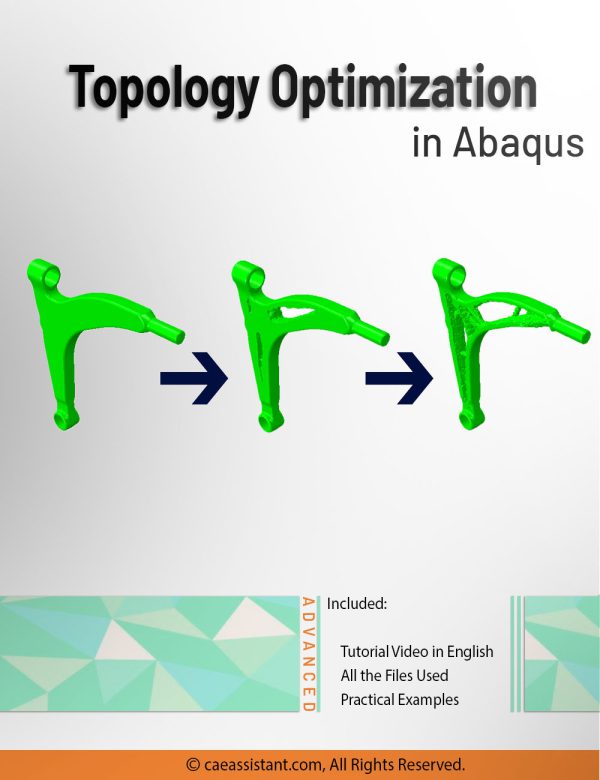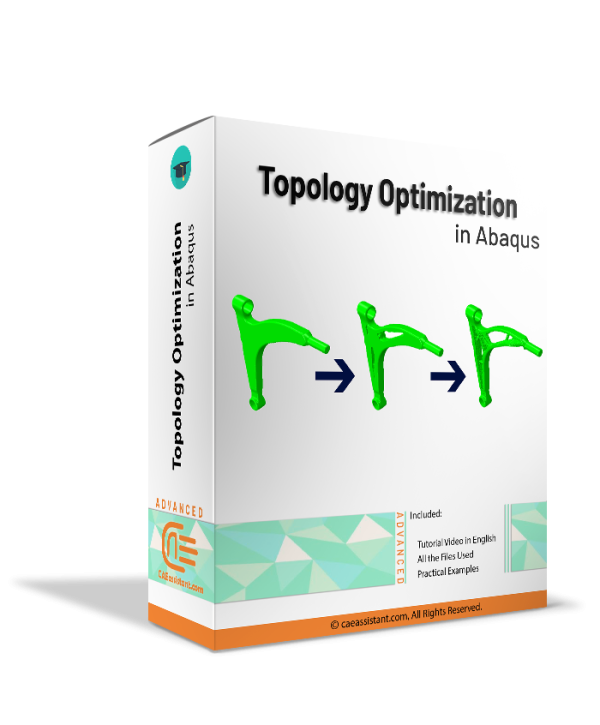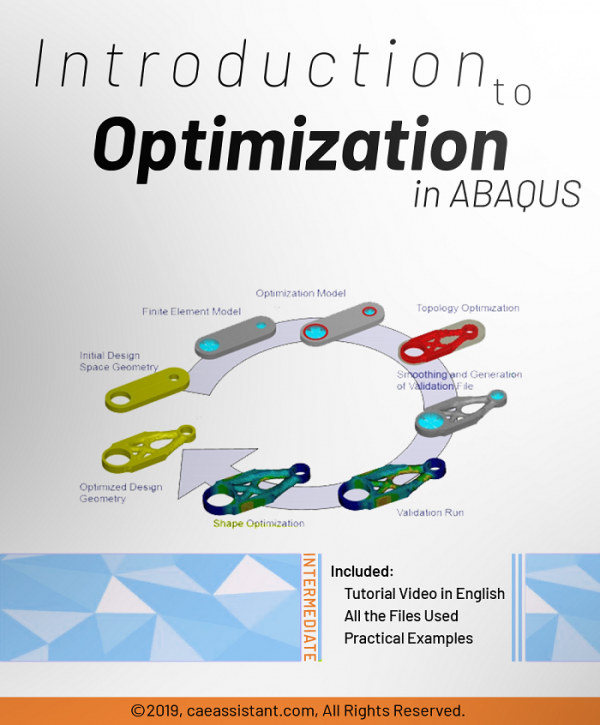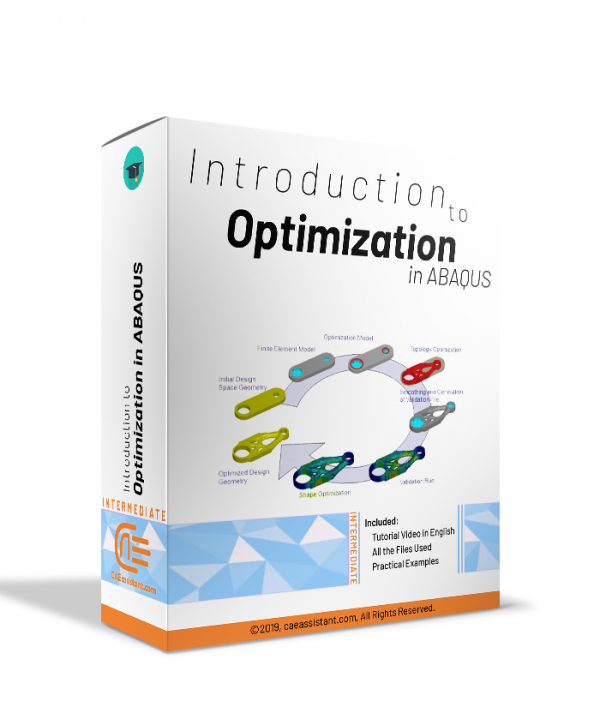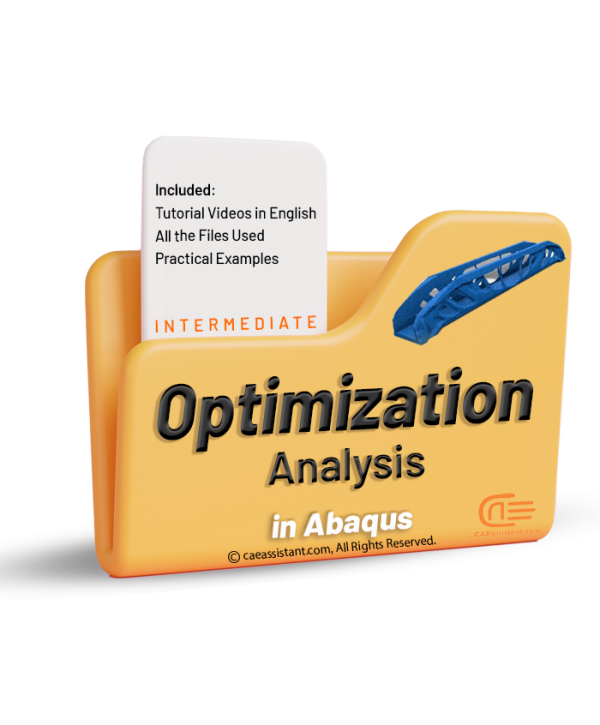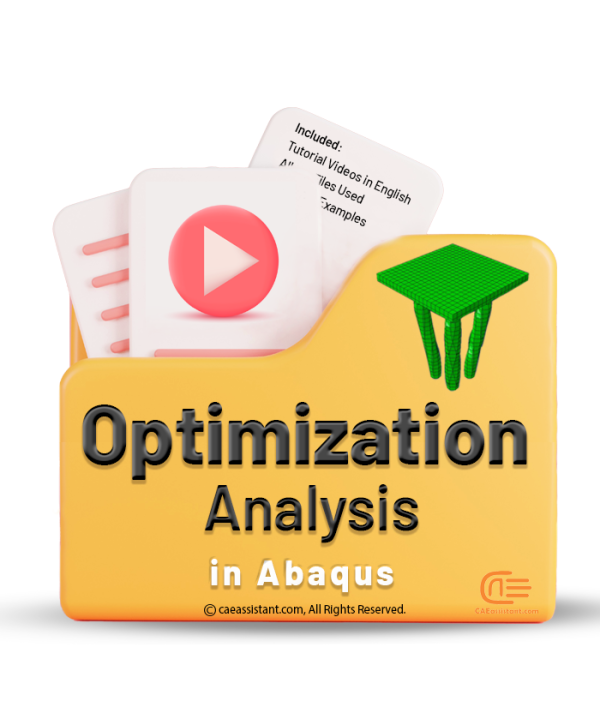Optimization
Shape optimization in Abaqus
Shape optimization is employed towards the conclusion of the design process, when the overall structure of a component is established and only minor adjustments are permitted by relocating surface nodes in specific regions. In shape optimization, the displacements of the surface nodes (design nodes) serve as the design variables. The process commences with a finite element model that requires slight enhancements or with a finite element model derived from a topology optimization. In this training package, first, you will learn the concept of optimization and shape optimization in Abaqus. After that, all required settings to do a shape optimization, such as optimization task and design responses will be fully explained. And in the last lesson, you will learn how to create an optimization process and be familiar with the generated files by the shape optimization process.
Abaqus Topology Optimization
Optimization is a fundamental concept used to enhance the effectiveness and efficiency of systems, designs, and decisions. It finds application in various domains, including industrial processes, finance, and communication networks. In engineering, optimization plays a crucial role in improving the design of systems and structures by maximizing performance and minimizing costs, weight, or other parameters. Structural optimization specifically focuses on designing or modifying structures to meet performance criteria while minimizing or maximizing objectives such as strength, weight, cost, or efficiency. The Abaqus software provides comprehensive structural optimization capabilities, including topology, shape, sizing, and bead optimization. This training package primarily focuses on Abaqus topology optimization. Through the lessons and workshops, you will gain insights into the tips, tricks, and techniques for effectively utilizing topology optimization within the Abaqus software.
Optimization in ABAQUS
Notice: 2 hours of the package is available now; during 1-month after purchase, it will be completed.
Optimization is a process of finding the best solution to a problem within a set of constraints. It involves maximizing or minimizing an objective function while satisfying a set of constraints. Optimization in Abaqus involves the use of advanced algorithms and techniques to improve the design of structures and systems. Abaqus provides a range of optimization tools, including topology optimization, size optimization, and shape optimization. These tools help in improving the performance of structures by reducing their weight, increasing their stiffness, and minimizing their stress levels. In this package, all types of optimization, such as Topology, will be discussed; after each lesson, there will be workshops to help you to understand optimization with practical examples.
Optimization in ABAQUS Analysis
This tutorial teaches how optimize topology of a model in ABAQUS. Structural optimization is an iterative process that helps to improve designs and produce parts and components that are lightweight, strong and long-lasting.
Topology optimization begins with an initial design, which is assumed to be the maximum physical extent of the component, and determines a new material distribution by changing the density and the stiffness of the elements in the initial design while continuing to satisfy the optimization constraints. In this package different workshops to implement topology optimization are used.
